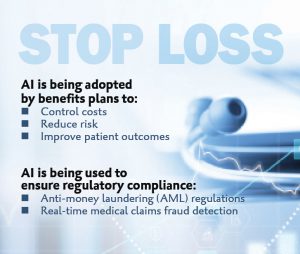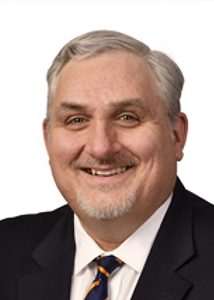Stop loss carriers see interest broadening to smaller employers
By Thomas A. McCoy, CLU
Healthcare coverage is the centerpiece of an employee benefits plan. It also can be the biggest pain point for plan sponsors because of the relentless increases in the cost of healthcare. While a rise in the cost of medical care seems inevitable, many employers choose to maintain greater control over employees’ medical benefits by moving from a fully insured plan to a self-funded plan.
John Thornton, executive vice president, sales and marketing, of Amalgamated Life Insurance Company, says, “What we have experienced over time is that the plan sponsor receives rate increases year over year from the carrier; the plan sponsor eventually becomes exasperated with the increases and directs their broker to analyze the situation.
“That’s the point where the decision is made to switch to self-insurance,” he notes.
Smaller insurers take longer to make that decision, Thornton says, “as the risk associated with self-funding needs to be carefully considered due to their size, but we’re seeing an increase in small and mid-sized employers turning to self-funded plans. They see the cash flow benefits and potential savings that self-funding plans can realize, including the elimination of state premium taxes, which can run between 2% and 3% of premiums.
“Self-funding as it was initially conceived was not an option for employers with less than 500 employees,” he explains. “Now smaller employers are becoming more knowledgeable about it.
“Plan sponsors are willing to take on the risks of self-funding based on the belief that through their partnership with a knowledgeable broker, TPA, stop loss carrier and cost containment suppliers, they can customize programs to meet their needs, and control their costs more effectively.”
Research from Employee Benefit Research Institute found that, in 2022, among private sector employers with fewer than 100 employees, 18% had at least one health plan that was self-insured; the number jumped to 38% for those with 100 to 500 employees; and to 72% for those with 500-plus employees.
Mark Lawrence, president of HM Insurance Group (HM), which provides stop loss coverage for more than 1,500 self-funded plans, says his company also has seen a lot of growth in the smaller employer segment of the market.
“Smaller companies as well as larger ones are attracted to self-funding by the sense of control it gives them over their benefits program,” says Lawrence. “It gives them access to their own data.
“The tight labor market has been a 
major factor in many employers’
decisions not to shift additional
health insurance costs onto plan members.”
—John Thornton
Executive Vice President, Sales and Marketing
Amalgamated Life Insurance Company
“They have insights that they don’t typically get when they are fully insured, and they have a lot more flexibility in how they put the program together in terms of choosing an administrator and constructing the program,” he adds.
HM’s employer customers for stop loss business range in size from “the tiniest end of the self-insured spectrum to those with 10,000 or 20,000 employees,” Lawrence says. “Our target tends to be self-funded employers with 50 to 5,000 lives.” HM writes the business on its own paper and is rated A by A.M. Best.
Great American writes stop loss business through Radion Health, a managing general underwriter that specializes in the self-insured market for small employers. Adam Hawf, CEO of Radion Health, says the decision to self-insure for these employers is often a multi-year process.
 “Small business owners … tend to
“Small business owners … tend to
favor a gradual approach to taking
control of their health plans.”
—Adam Hawf
CEO
Radion Health
“Most employers are justifiably nervous about disrupting their employees’ health benefits, and they approach this process with prudence and caution,” says Hawf. “In particular, small business owners often focus on doing the right thing by their employees and tend to favor a gradual approach to taking control of their health plan.
“The most helpful data for any employer considering a move to a self-funded plan is what’s in their own health plan—the drivers of the spending within their group. Surprisingly, fully insured groups often struggle to get this data from their incumbent carrier,” says Hawf.
“So, the most important step for the employer is to demand this data. Or they can work with a company such as Radion Health that can evaluate their risk without any plan data. This may allow them to transition to a self-funded arrangement where they can begin to have full transparency of their data.”
Thornton adds, “The employer also should assess their ability to manage a self-funded program and/or to contract with a third-party administrator (TPA) to oversee compliance issues, the claims management process and member documents and communications.”
Lawrence says, “The brokers we work with are experts in the self-funded space. A good broker will help structure the financial element and explain it so the employer understands the difference between what they were paying with a fully-insured plan and what the self-insured plan requires of them. This doesn’t eliminate all the self-funding risk, but it makes the transition less daunting.”

“One of the characteristics of brokers and consultants we seek to partner with is loyalty in their business relationships, ”Thornton explains. “When we see employers that switch carriers frequently, we know this is not going to be a good partner. We do recognize that plan sponsors want to remain cost competitive, but just as in their respective businesses, client loyalty is important.” Plan sponsors are trying to balance the need to control their costs while still remaining competitive in the labor market. While health plan cost increases vary widely by size of employer, a Mercer survey of 1,700 employers conducted in August projects their next year’s health benefits costs to rise by 5.4%. Without changes which these employers plan to make to their plans, the increase would be 6.6%.“The tight labor market is a concern of most plan sponsors who want to attract and retain employees,” says Thornton. “This has been a major factor in many employers’ decisions not to shift additional health insurance costs onto plan members.”
Lawrence believes the tight labor market has less of an effect on employers’ benefit plan decisions than their ongoing commitment to their workforce. “Some employers are just naturally more generous with the benefits they want to offer. Self-funding can give them more flexibility in structuring those benefits.”
Thornton points out several strategies plan sponsors are using to combat drug cost increases. They include prior authorizations in drug plans; step therapy strategies wherein the plan member must try less costly medications before going to costlier drugs; and requiring members to use lower-cost settings for physician administered drugs, such as biologics.
“Smaller companies as well as larger ones
are attracted to self-funding by the sense of control it gives them over their benefits program.”
—Mark Lawrence
President
HM Insurance Group
“Benefits plans also are seeking out more transparent specialty drug management programs in place of less transparent pharmacy benefit managers (PBMs),” he says. “And they are utilizing telehealth platforms to reduce unnecessary visits to emergency rooms and physicians’ offices.”
Hawf points out the role for artificial intelligence in managing risk for self-funded medical plans. “Most industry participants are focused on the role of artificial intelligence in evaluating the risk of prospective insured groups, but there is a much larger opportunity to use AI to support employers in ensuring that their employees get access to the right care at the right time.”
Thornton says AI is already being adopted by benefits plans to control costs, reduce risk and improve patient outcomes. “It also is an effective tool to ensure regulatory compliance including anti-money laundering (AML) regulations, and real-time medical claims fraud detection.”
And, as a practical tool for plan participants, Thornton notes, “AI virtual assistants can provide 24/7 response to member inquiries.”
Stop loss insurers report that a few medical conditions and treatments continue to account for a high percentage of the most expensive claims. For stop loss insurer Amalgamated Life, “Cancer presents the largest number of claims submitted and represents the largest percentage of claims costs,” says Thornton. “The use of injectable drugs and infusions in clinical settings remain among cost drivers in the treatment of cancers, musculoskeletal and cardiovascular conditions.”
Other contributors to the most expensive claims, he says, are “the rapid FDA approvals of new specialty drugs, as well as the introduction of cell and gene therapies, which can cost several hundred thousand dollars to several million dollars per treatment.”
Hawf adds, “We have seen higher than typical cancer rates in the last 18 months. This is likely due to individuals deferring routine screenings during the pandemic.”
At HM, “First dollar medical claims costs are up 6% to 8% overall in 2023,” says Lawrence. “Two of the biggest drivers of the increase are new technologies being used in treatments and approvals of new specialty drugs.
“Another wild card will be what happens with hospital negotiations,” Lawrence adds. “Our company doesn’t negotiate those deals. The underlying administrators that pay claims negotiate those deals. My understanding is that some of those have been somewhat contentious over the last year or so coming out of COVID. My expectation is that their costs have gone up significantly and they are going to want to renegotiate those contracts, so that could create some headwinds for us going forward.
“During the COVID years we wrote a little less new premium, concentrated on renewals, added some new broker partners, and expanded geographically,” Lawrence explains. “As a result, we’ve increased our gross premiums in stop loss by 50% over the last three to four years. We would not be growing at that rate without our strong broker relationships.”
For more information:
Amalgamated Life Insurance Company
www.amalgamatedenefits.com
HM Insurance Group
www.hmig.com
Radion Health
www.radionhealth.com
The author
Thomas A. McCoy, CLU, is an Indiana-based freelance insurance writer.






